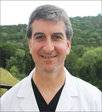Ask A Plastic Surgeon: How Can I Minimize Post-Surgery Pain?

One of the most common questions prospective patients have about plastic surgery is ‘how painful is it?’ Unfortunately, that question is very difficult to answer as pain can differ greatly from patient to patient. This is because the recovery experience (and post procedure pain specifically) is dependent on a number of variables like the patient’s unique genetics, pain tolerance, and the type of surgery performed. It also depends upon how well you follow your plastic surgeon’s instructions before, during and after your surgery.
Fortunately, there are many things plastic surgery patients can do to minimize pain following surgery. The following tips can help minimize discomfort during your recovery process:
Develop A Solid Recovery Plan
A well thought out recovery plan is crucial to helping patients have a positive recovery experience. Setting one up begins well before the cosmetic procedure is performed. Make sure the following are in place ahead of your surgery, and you’ll be able to prioritize rest and recovery.
- Find someone you trust to take care of you, especially in the first 48 hours
- Pick up pain medications, purchase ice-packs and other supplies
- Purchase food, snacks, and a good book or relaxing entertainment
- Set up a recovery area where you can rest and be comfortable
- Take the necessary time you need off work and/or reschedule other appointments
Maximize Rest
Prioritizing rest is the single most important thing you can do to speed your healing and reduce pain. The body heals while it’s at rest. Setting up a solid recovery plan ahead of time can help you maximize rest, and minimize worry.
Take Pain Medication as Directed
The amount of pain medication you’re prescribed will depend on the type of surgery you have. This prescription must be picked up before your surgery so you have what you need as soon as you return home. Pharmacies will typically not hold narcotic prescriptions for longer than a few days after they are sent by your surgeon.
Trust that your surgeon knows how much pain medication you will need, and when you should take it. Follow their recommended schedule. If you skip medications or wait too long between pills, you may experience pain while waiting for your next dose to take effect.
Many surgeons are minimizing narcotic prescriptions in favor of non-narcotic, anti-inflammatory medications. These are as effective as narcotics in many cases, and reduce narcotic side effects like nausea and constipation.
Wear Compression Garments
Your surgeon may send you home with compression garments or tight bandages and instructions on when to wear them. Compression garments are often used after liposuction and body contouring surgeries, but can also help reduce swelling or minimize discomfort after other cosmetic procedures. Compression garments benefit you after surgery in the following ways:
- Reduce swelling
- Reduce bruising
- Minimize scarring
- Prevent fluid build up
- Minimize pain
- Enhance final results
Keep The Surgical Area Elevated
If possible, elevate the surgical area to reduce swelling, minimize bleeding or bruising, and hasten the healing process. Depending on the area you had treated, this may mean propping yourself up in bed, sitting up in a chair, or elevating your lower body.
Your surgeon may recommend sleeping with pillows to hold your torso upright, or to prevent side-sleeping.
Cold Therapy
Using cold compresses near your surgical area can help reduce swelling and alleviate pain and discomfort. Cold compresses might include ice cubes in a zip lock bag, ice wrapped in a clean washcloth, frozen veggies in a zip lock, commercial gel packs or frozen corn syrup (an old Southern trick: the corn syrup freezes to a malleable gel!) Avoid ice packs that freeze solid; these can be too cold and cause frost bite.
Move Your Body
Gentle, easy movement helps promote blood circulation for a quicker, less painful recovery. Within 24 hours of surgery, you should be sitting up and taking short, easy walks around your house. Your surgeon may also provide you with a list of simple exercises.
Although movement is helpful, never overexert yourself. Refrain from heavy lifting, strenuous or high impact activity until cleared by your surgeon.
Massage
Lymphatic massage reduces discomfort by helping to clear fluid buildup, reduce swelling and assist the healing process. Your surgeon can show you how to gently massage from the treatment area toward the closest lymph drainage zone.
Do not massage over the incision site and be cautious with massaging numb areas. Massage for just 10-20 minutes prior to icing to avoid overdoing it, if cleared by your surgeon.
Meditation
Mindfulness meditation is a proven method of minimizing pain. Meditation is most successful when practiced daily for a minimum of 5-10 minutes. Guided meditations make it easy to begin a meditation practice. Download a meditation app, or search online for the terms ‘mindfulness for pain,’ ‘body scan for pain,’ or ‘meditation for pain.’
Eat Healthy
The food you eat while recovering will either fuel your body’s healing or prolong it. To decrease inflammation, swelling and the related pain, reduce your sodium intake. This is most effective when you begin 2 weeks prior to your surgery, and continue for at least 2 weeks after.
In addition, consume plenty of protein and a variety of healthy vegetables. Your body will use these valuable nutrients to heal incisions and rebuild collagen.
Drink Lots of Water
Staying hydrated is essential for both healing and minimizing pain. In response to insufficient water, the body will bloat and swell, leading to more pain. You may not feel like drinking water, but it will keep swelling to a minimum and improve your comfort level. Hydrating solutions (like Gatorade or Pedialyte) are also great.
Disclaimer: The contents of the Westlake Dermatology website, including text, graphics, and images, are for informational purposes only and are not intended to substitute for direct medical advice from your physician or other qualified professional.
